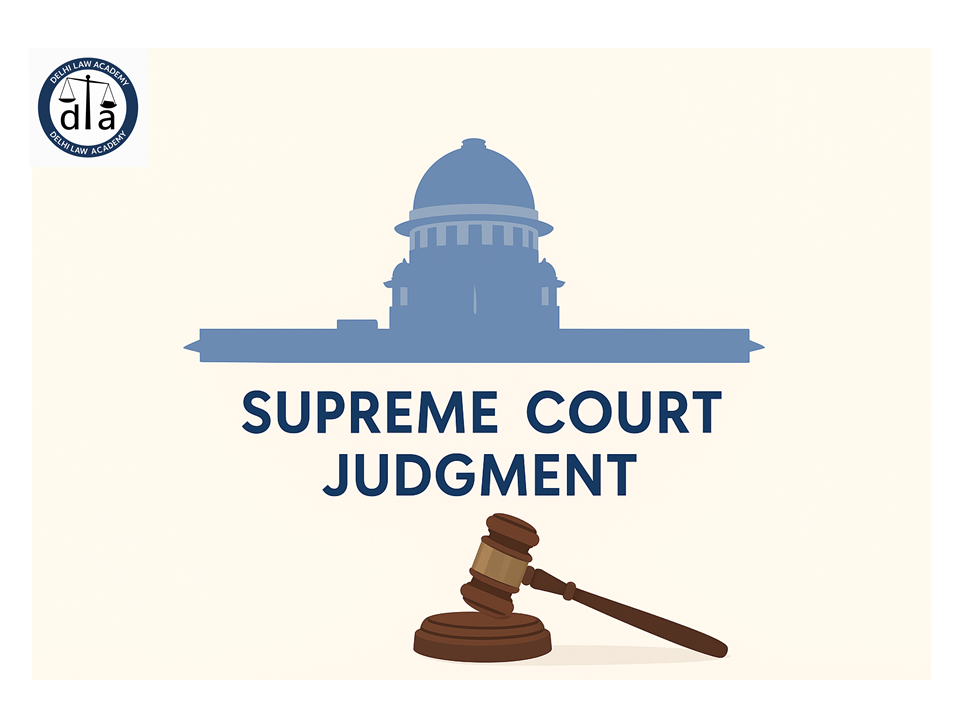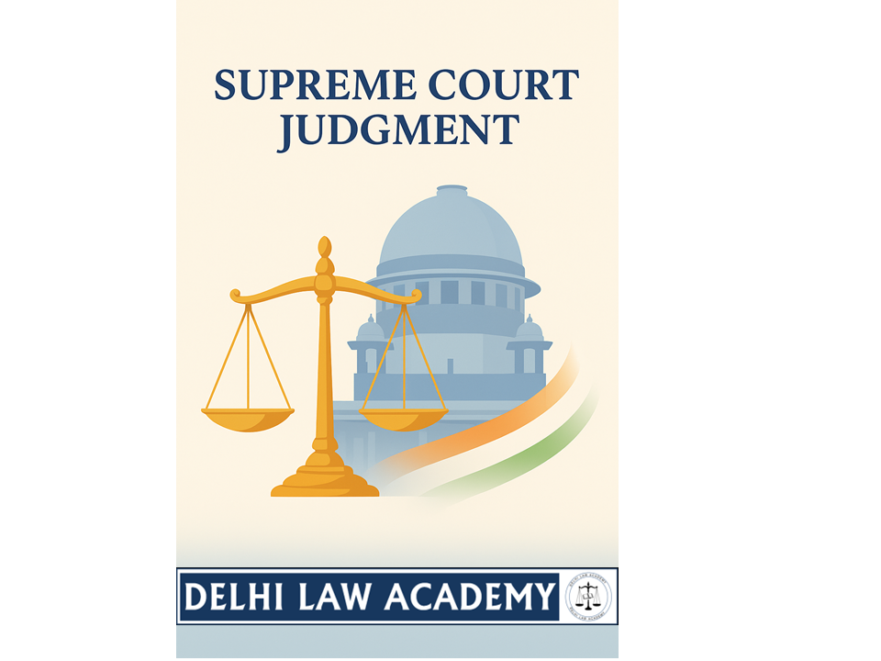
📘 STATEMENT MADE IN THE COURSE OF CONSPIRACY
(Section 10 of the Indian Evidence Act)
This appeal is directed against the concurrent judgments and orders of the courts below, convicting the two appellants under Section 120-B read with Section 165-A of the Indian Penal Code.
The second appellant, Ramji Sonar, is a gold smith by profession, and runs a shop on the main road in the Village Naogachia. … The first appellant, Badri, runs a school for small boys in the same village, about 50 yards away from the shop aforesaid, of the second appellant. On August 22, 1953, the First Informant, who, holding the position of an Inspector of Police, was in charge of the police station, made a seizure of certain ornaments and molten silver from a vacant building in front of the house of the second appellant, Ramji.
On August 31, the same year, the first appellant, Badri, came to the police station, saw the Inspector in the central room of the thana, and offered to him a packet wrapped in a piece of old newspaper, containing Rs 500 in currency notes. He told the Inspector, (PW 1) that the second appellant, Ramji, had sent the money through him in pursuance of the talk that they had with him, in the evening of August 24, as a consideration for hushing up the case that was pending against Ramji.
🔹 Legal Issue
The only serious question raised in this appeal, is the point raised on behalf of the second appellant, Ramji, as to whether the statement made by the first appellant, Badri, on August 31, 1953, that he had been sent by the second appellant with the money to be offered by way of bribe to the police officer, was admissible against him.
🔹 Findings and Reasoning
The incident of August 24, when both the appellants approached the Inspector with the proposal that he should hush up the case against the second appellant, for which he would be amply rewarded, is clear evidence of the two persons having conspired to commit the offence of bribing a public servant in connection with the discharge of his public duties. There cannot, therefore, be the least doubt that the court had reasonable grounds to believe that the appellants had entered into a conspiracy to commit the offence. Therefore, the charge under Section 120-B had been properly framed against both of them. That being so, anything said or done by any one of the two appellants, with reference to the common intention, namely, the conspiracy to offer bribe, was equally admissible against both of them.
The statement made by the first appellant on August 31, that he had been sent by the second appellant to make the offer of the bribe in order to hush up the case which was then under investigation, is admissible not only against the maker of the statement — the first appellant — but also against the second appellant, whose agent the former was, in pursuance of the object of the conspiracy. That statement is admissible not only to prove that the second appellant had constituted the first appellant his agent in the perpetration of the crime, as also to prove the existence of the conspiracy itself.
The incident of August 24, is evidence that the intention to commit the crime had been entertained by both of them on or before that date. Anything said or done or written by any one of the two conspirators on and after that date until the object of the conspiracy had been accomplished, is evidence against both of them.
The incident of August 24, is a clear indication of the existence of the conspiracy, and the court was perfectly justified in drawing up the charge under Section 120-B also. It is no answer in law to say that unless the charge under that section had been framed, the act or statement of one could not be admissible against the other. Section 10 of the Evidence Act, has been deliberately enacted in order to make such acts and statements of a co-conspirator admissible against the whole body of conspirators, because of the nature of the crime.
💡 A conspiracy is hatched in secrecy, and executed in darkness. Naturally, therefore, it is not feasible for the prosecution to connect each isolated act or statement of one accused with the acts or statements of the others, unless there is a common bond linking all of them together.
Ordinarily, specially in a criminal case, one person cannot be made responsible for the acts or statements of another. It is only when there is evidence of a concerted action in furtherance of a common intention to commit a crime, that the law has introduced this rule of common responsibility, on the principle that every one concerned in a conspiracy, is acting as the agent of the rest of them.
As soon as the court has reasonable grounds to believe that there is identity of interest or community of purpose between a number of persons, any act done, or any statement or declaration made, by any one of the co-conspirators, is, naturally, held to be the act or statement of the other conspirators, if the act or the declaration has any relation to the object of the conspiracy.
Otherwise, stray acts done in darkness in prosecution of an object hatched in secrecy, may not become intelligible without reference to the common purpose running through the chain of acts or illegal omissions attributable to individual members of the conspiracy.
🔹 Court’s Conclusion
The payment was made, and the statement that it was being made with a view to hushing up the case against the second appellant, is a part of the same transaction, that is to say, the statement accompanied the act of payment of the bribe. Hence, it cannot be said that the statement was made after the object of the conspiracy had already been accomplished.
The object of the conspiracy was the hushing up of the criminal case against the second appellant, by bribing the public servant, who was in charge of the investigation of the case. The object of the conspiracy was yet far from being accomplished, when the statement in question was made.
🧾 The leading case on the subject is that of R. v. Blake [(1844) 6 QB 126]. That decision is an authority both for the positive and the negative aspects of the question. It lays down what is admissible and what is not admissible.
It held that the documents actually used in effectuating the objects of the conspiracy, were admissible, and that those documents which had been created by one of the conspirators after the object of the conspiracy had been achieved, were not admissible.
Section 10 of the Evidence Act is on the same lines. It is manifest that the statement in question in the present case, was made by the first appellant in the course of the conspiracy, and accompanied the act of the payment of the money, and is clearly covered by the provisions of Section 10. It must, therefore, be held that there is no substance in the only question of law raised in this appeal.
📚 Further Reading for Law Aspirants
Explore more useful resources from Delhi Law Academy to strengthen your preparation:
💬 Frequently Asked Questions on Section 10 – Statements Made in the Course of Conspiracy
Section 10 of the Indian Evidence Act explains that when two or more persons conspire to commit an offence, anything said, done, or written by one conspirator in reference to their common design is admissible against all. It recognizes joint responsibility among conspirators for acts or statements made in furtherance of the conspiracy.
The key question was whether the statement made by Badri, claiming he was sent by Ramji to offer a bribe to a police officer, was admissible against Ramji under Section 10. The Court held it was admissible because it was made during and in furtherance of the conspiracy.
Such statements are admissible only when made in reference to the common intention of the conspiracy and during its continuance. Once the object of the conspiracy has been achieved or abandoned, later statements are not admissible against co-conspirators.
The logic is that a conspiracy is typically executed in secrecy. Since direct proof is hard to find, the law treats conspirators as agents of each other — meaning each one’s acts or declarations made for the common goal bind all others involved.
The Supreme Court upheld the conviction, ruling that the statement made by Badri while handing over the bribe money was part of the same transaction and in the course of the conspiracy. Hence, it was admissible against both conspirators under Section 10.
Notable cases include Badri Rai v. State of Bihar (1958 SC), State v. Nalini (Rajiv Gandhi Assassination Case), and R. v. Blake (1844) 6 QB 126. These cases clarify when a conspirator’s statement becomes relevant and admissible against others.
Contact us
📍 Delhi Law Academy – Jaipur Branch
6C, Tower 2, Coaching Hub, Pratap Nagar, Jaipur – 302033
📞 Phone:
+91 9911916552
+91 8447285606
✉️ Email:
contactus@delhilawacademy.com

